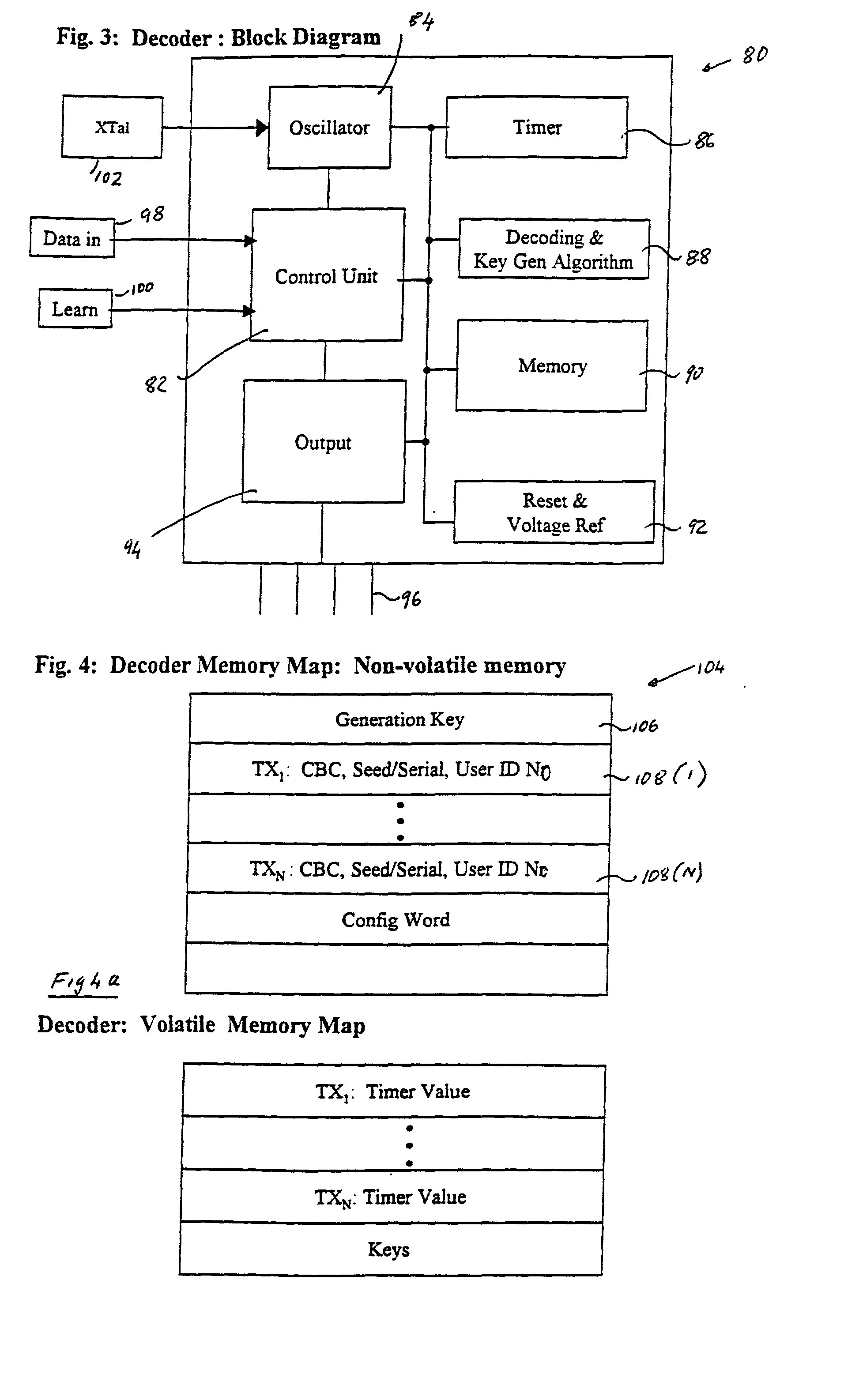Method of and apparatus for transferring data
a technology of data transfer and data storage, applied in the direction of unauthorized memory use protection, instruments, generating/distributing signals, etc., can solve the problems of unpredictability of time required to scan through the code space, unpredictability of typical replay attacks, and unidirectional systems
- Summary
- Abstract
- Description
- Claims
- Application Information
AI Technical Summary
Benefits of technology
Problems solved by technology
Method used
Image
Examples
Embodiment Construction
[0087] FIG. 1 is a block diagram representation of an encoder 10 which is used in a transmitter for transmitting data, in a secure form, according to the invention, over a radio frequency, infrared, or other medium.
[0088] The encoder can be implemented as an integrated circuit with its various components being part of this circuit or provided as discrete components.
[0089] The encoder 10 has non-volatile memory 12, a control unit or processor 14, an interface or input module 16 which receives data from input sources 18 such as switches or push buttons, an oscillator 20, a timer 22 and a voltage reference module 24.
[0090] Information pertaining to the identity of the encoder is stored in the non-volatile memory 12.
[0091] The timer 22 runs continuously and is connected to the oscillator 20, or to a crystal, to give a timing reference. The timer 22 changes at regular intervals to reflect time irrespective of whether the encoder is activated for transmission. The time measure can be in m...
PUM
 Login to View More
Login to View More Abstract
Description
Claims
Application Information
 Login to View More
Login to View More - R&D
- Intellectual Property
- Life Sciences
- Materials
- Tech Scout
- Unparalleled Data Quality
- Higher Quality Content
- 60% Fewer Hallucinations
Browse by: Latest US Patents, China's latest patents, Technical Efficacy Thesaurus, Application Domain, Technology Topic, Popular Technical Reports.
© 2025 PatSnap. All rights reserved.Legal|Privacy policy|Modern Slavery Act Transparency Statement|Sitemap|About US| Contact US: help@patsnap.com



